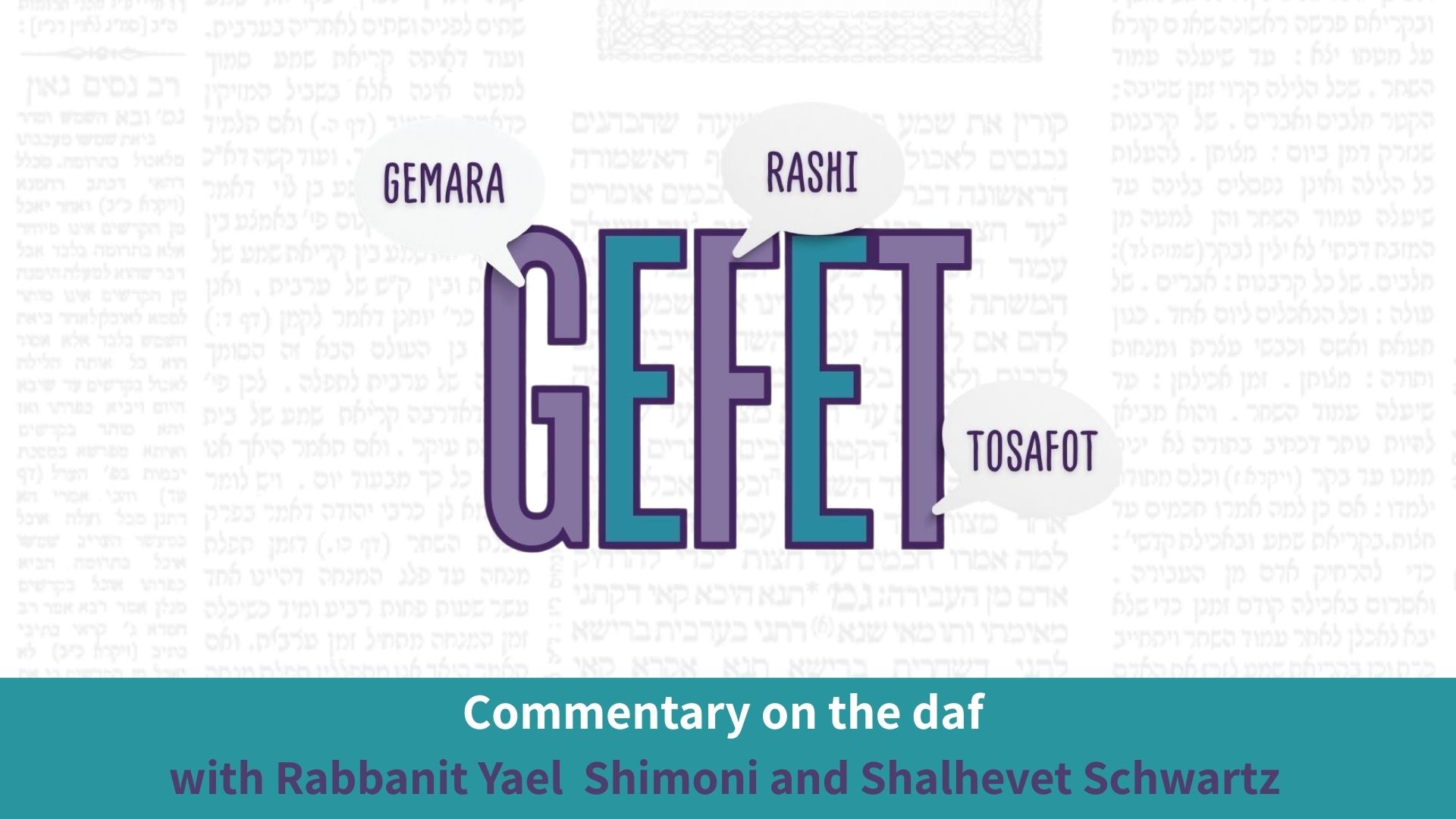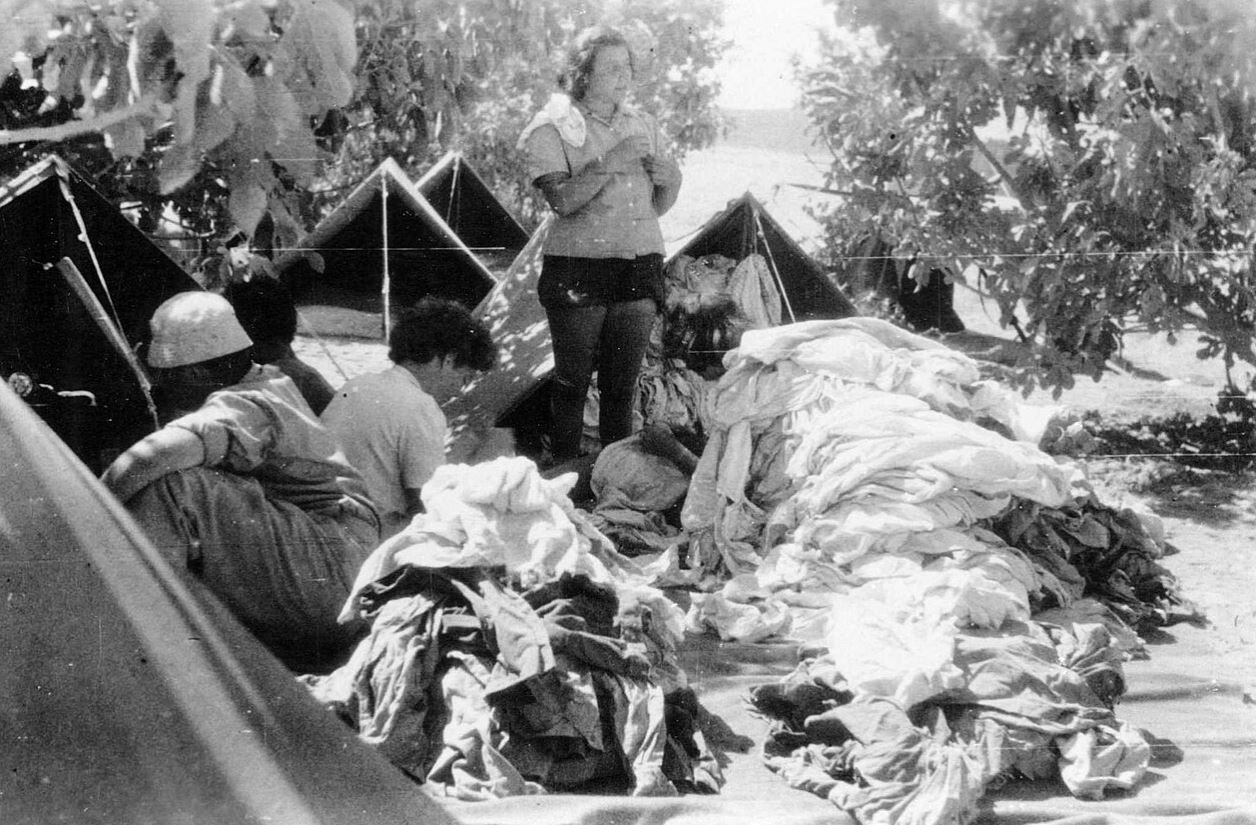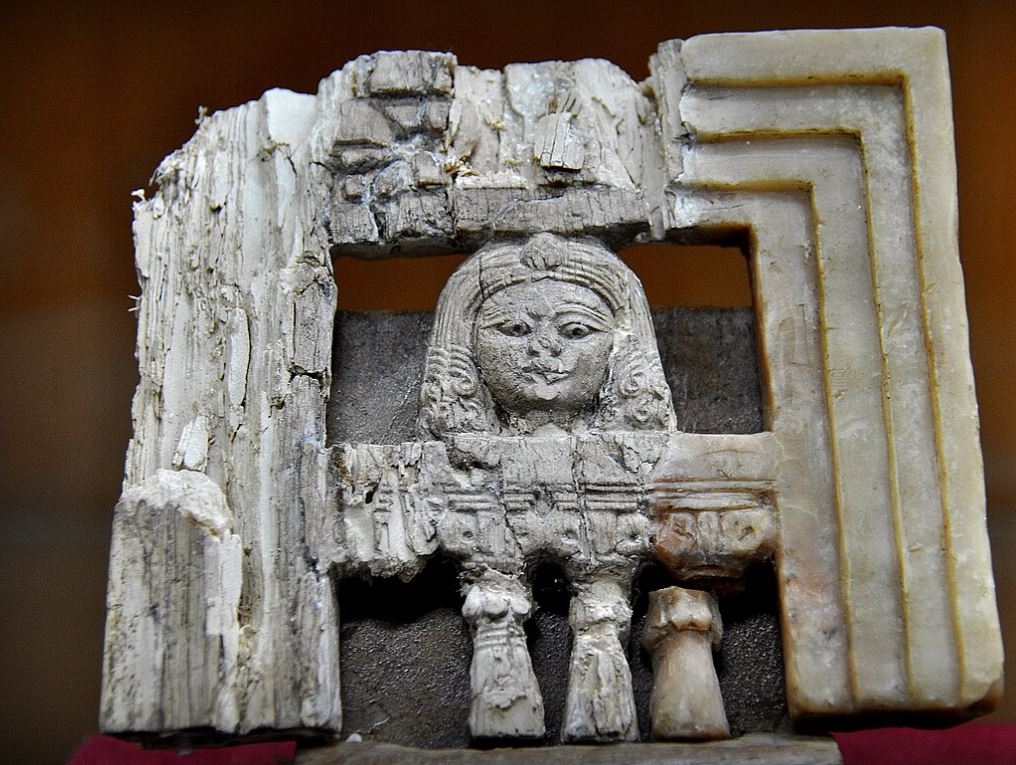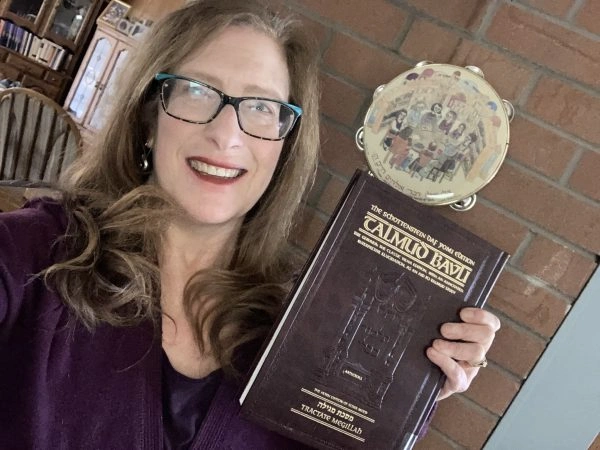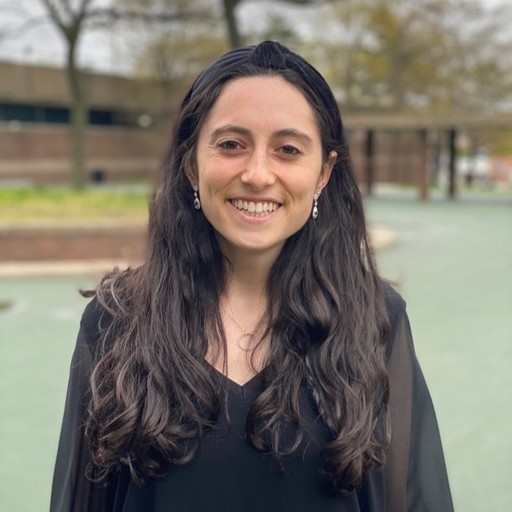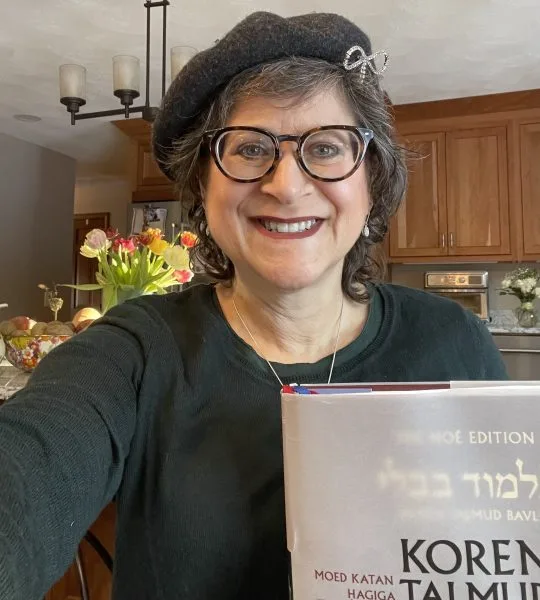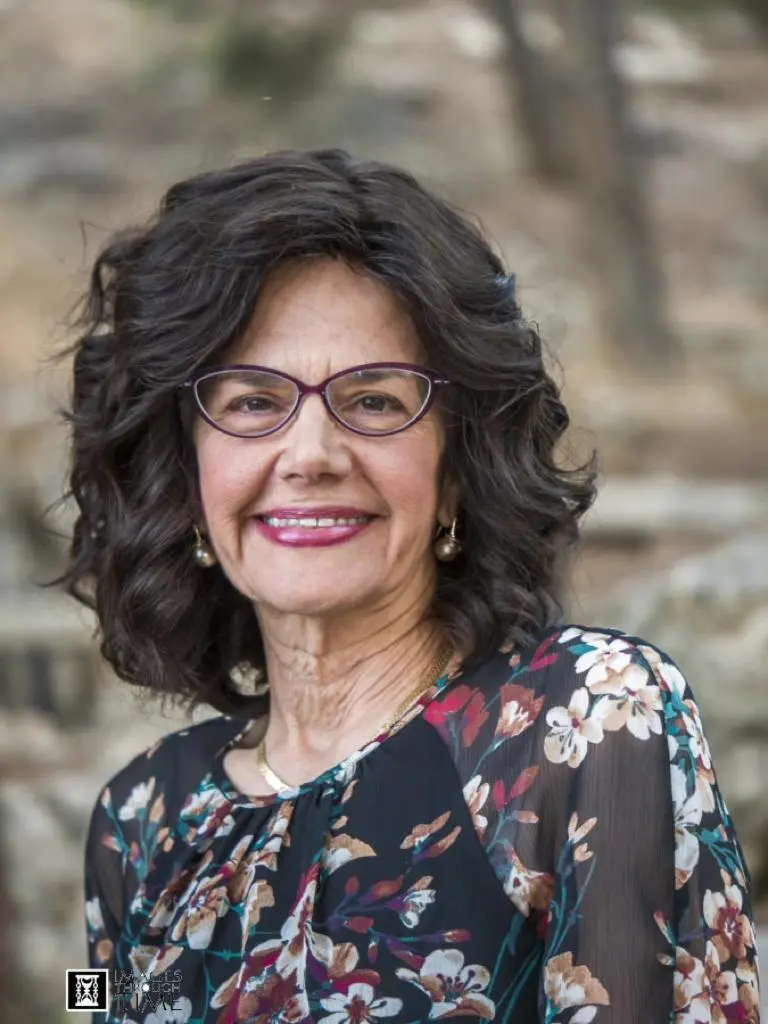On what days is it possible to read the Megillah? On what does it depend? Why is the law different for those who live in villages and why are they allowed to read it earlier than the dates specified in the Megillah? Where in the Megillah can one find an allusion to this? Is there an opinion that one is not allowed to read the Megillah before the 14th? From where do we know that walled cities read on the 15th and is it walled cities from the time of Yehoshua or from the time of Achashvarosh and the Purim story?
Megillah 2
Share this shiur:
Megillah
Masechet Megilah is sponsored by Jordana and Kalman Schoor on behalf of their daughter Daria Esther who is completing Masechet Megilla in honor of her Bat Mitzva. Mazal tov!
This month’s learning is sponsored by Beth Balkany in honor of their granddaughter, Devorah Chana Serach Eichel. “May she grow up to be a lifelong learner.”
This month’s learning is dedicated in memory of Rabbi Dr. Raymond Harari z”l, on the occasion of his first yahrzeit. Over the course of his distinguished career as an educator, as principal of the Yeshiva of Flatbush, and as community rabbi, he inspired thousands of students with his wisdom, warmth, and unwavering commitment to Torah.
This week’s learning is sponsored by Mark and Rena Goldstein for refuah shleima of Ben Ezra Septee ben Rena and Aliza Margalit bat Shaina Raya.
Want to dedicate learning? Get started here:


Megillah
Masechet Megilah is sponsored by Jordana and Kalman Schoor on behalf of their daughter Daria Esther who is completing Masechet Megilla in honor of her Bat Mitzva. Mazal tov!
This month’s learning is sponsored by Beth Balkany in honor of their granddaughter, Devorah Chana Serach Eichel. “May she grow up to be a lifelong learner.”
This month’s learning is dedicated in memory of Rabbi Dr. Raymond Harari z”l, on the occasion of his first yahrzeit. Over the course of his distinguished career as an educator, as principal of the Yeshiva of Flatbush, and as community rabbi, he inspired thousands of students with his wisdom, warmth, and unwavering commitment to Torah.
This week’s learning is sponsored by Mark and Rena Goldstein for refuah shleima of Ben Ezra Septee ben Rena and Aliza Margalit bat Shaina Raya.
Delve Deeper
Broaden your understanding of the topics on this daf with classes and podcasts from top women Talmud scholars.
New to Talmud?
Check out our resources designed to help you navigate a page of Talmud – and study at the pace, level and style that fits you.
The Hadran Women’s Tapestry
Meet the diverse women learning Gemara at Hadran and hear their stories.
Megillah 2
מְגִילָּה נִקְרֵאת בְּאַחַד עָשָׂר, בִּשְׁנֵים עָשָׂר, בִּשְׁלֹשָׁה עָשָׂר, בְּאַרְבָּעָה עָשָׂר, בַּחֲמִשָּׁה עָשָׂר. לֹא פָּחוֹת, וְלֹא יוֹתֵר. כְּרַכִּין הַמּוּקָּפִין חוֹמָה מִימוֹת יְהוֹשֻׁעַ בִּן נוּן — קוֹרִין בַּחֲמִשָּׁה עָשָׂר, כְּפָרִים וַעֲיָירוֹת גְּדוֹלוֹת — קוֹרִין בְּאַרְבָּעָה עָשָׂר, אֶלָּא שֶׁהַכְּפָרִים מַקְדִּימִין לְיוֹם הַכְּנִיסָה.
MISHNA: The Megilla is read on the eleventh, on the twelfth, on the thirteenth, on the fourteenth, or on the fifteenth of the month of Adar, not earlier and not later. The mishna explains the circumstances when the Megilla is read on each of these days. Cities [kerakin] that have been surrounded by a wall since the days of Joshua, son of Nun, read the Megilla on the fifteenth of Adar, whereas villages and large towns that have not been walled since the days of Joshua, son of Nun, read it on the fourteenth. However, the Sages instituted that the villages may advance their reading to the day of assembly, i.e., Monday or Thursday, when the rabbinical courts are in session and the Torah is read publicly, and the villagers therefore come to the larger towns.
כֵּיצַד: חָל לִהְיוֹת אַרְבָּעָה עָשָׂר בַּשֵּׁנִי — כְּפָרִים וַעֲיָירוֹת גְּדוֹלוֹת קוֹרִין בּוֹ בַיּוֹם, וּמוּקָּפוֹת חוֹמָה לְמָחָר. חָל לִהְיוֹת בַּשְּׁלִישִׁי אוֹ בָּרְבִיעִי — כְּפָרִים מַקְדִּימִין לְיוֹם הַכְּנִיסָה, וַעֲיָירוֹת גְּדוֹלוֹת קוֹרִין בּוֹ בַיּוֹם, וּמוּקָּפוֹת חוֹמָה לְמָחָר.
How so? If the fourteenth of Adar occurs on Monday, the villages and large towns read it on that day, and the walled cities read it on the next day, the fifteenth. If the fourteenth occurs on Tuesday or Wednesday, the villages advance their reading to the day of assembly, i.e., Monday, the twelfth or thirteenth of Adar; the large towns read it on that day, i.e., the fourteenth of Adar, and the walled cities read it on the next day, the fifteenth.
חָל לִהְיוֹת בַּחֲמִישִׁי — כְּפָרִים וַעֲיָירוֹת גְּדוֹלוֹת קוֹרִין בּוֹ בַיּוֹם, וּמוּקָּפוֹת חוֹמָה לְמָחָר. חָל לִהְיוֹת עֶרֶב שַׁבָּת — כְּפָרִים מַקְדִּימִין לְיוֹם הַכְּנִיסָה, וַעֲיָירוֹת גְּדוֹלוֹת וּמוּקָּפוֹת חוֹמָה קוֹרִין בּוֹ בַיּוֹם.
If the fourteenth occurs on Thursday, the villages and large towns read it on that day, the fourteenth, and the walled cities read it on the next day, the fifteenth. If the fourteenth occurs on Shabbat eve, the villages advance their reading to the day of assembly, i.e., Thursday, the thirteenth of Adar; and the large towns and the walled cities read it on that day, i.e., the fourteenth of Adar. Even the walled cities read the Megilla on the fourteenth rather than on the fifteenth, as they do not read it on Shabbat.
חָל לִהְיוֹת בַּשַּׁבָּת — כְּפָרִים וַעֲיָירוֹת גְּדוֹלוֹת מַקְדִּימִין וְקוֹרִין לְיוֹם הַכְּנִיסָה, וּמוּקָּפוֹת חוֹמָה לְמָחָר. חָל לִהְיוֹת אַחַר הַשַּׁבָּת — כְּפָרִים מַקְדִּימִין לְיוֹם הַכְּנִיסָה, וַעֲיָירוֹת גְּדוֹלוֹת קוֹרִין בּוֹ בַיּוֹם, וּמוּקָּפוֹת חוֹמָה לְמָחָר.
If the fourteenth occurs on Shabbat, both the villages and large towns advance their reading to the day of assembly, i.e., Thursday, the twelfth of Adar; and the walled cities read it on the day after Purim, the fifteenth. If the fourteenth occurs on Sunday, the villages advance their reading to the day of assembly, i.e., Thursday, the eleventh of Adar; and the large towns read it on that day, i.e., the fourteenth of Adar; and the walled cities read it on the next day, the fifteenth.
גְּמָ׳ מְגִילָּה נִקְרֵאת בְּאַחַד עָשָׂר. מְנָלַן? מְנָלַן?! כִּדְבָעֵינַן לְמֵימַר לְקַמַּן: חֲכָמִים הֵקֵילּוּ עַל הַכְּפָרִים לִהְיוֹת מַקְדִּימִין לְיוֹם הַכְּנִיסָה, כְּדֵי שֶׁיְּסַפְּקוּ מַיִם וּמָזוֹן לַאֲחֵיהֶם שֶׁבַּכְּרַכִּים.
GEMARA: We learned in the mishna: The Megilla is read on the eleventh of Adar. The Gemara asks: From where do we derive this halakha? The Gemara expresses surprise at the question: What room is there to ask: From where do we derive this halakha? The reason is as we intend to say further on: The Sages were lenient with the villages and allowed them to advance their reading of the Megilla to the day of assembly, so that they would be free to supply water and food to their brethren in the cities on the day of Purim. Accordingly, the Megilla is read on the eleventh due to a rabbinic enactment.
אֲנַן הָכִי קָאָמְרִינַן: מִכְּדִי כּוּלְּהוּ אַנְשֵׁי כְּנֶסֶת הַגְּדוֹלָה תַּקְּנִינְהוּ, דְּאִי סָלְקָא דַעְתָּךְ אַנְשֵׁי כְּנֶסֶת הַגְּדוֹלָה אַרְבָּעָה עָשָׂר וַחֲמִשָּׁה עָשָׂר תַּקּוּן — אָתוּ רַבָּנַן וְעָקְרִי תַּקַּנְתָּא דְּתַקִּינוּ אַנְשֵׁי כְּנֶסֶת הַגְּדוֹלָה? וְהָתְנַן: אֵין בֵּית דִּין יָכוֹל לְבַטֵּל דִּבְרֵי בֵּית דִּין חֲבֵירוֹ אֶלָּא אִם כֵּן גָּדוֹל מִמֶּנּוּ בְּחָכְמָה וּבְמִנְיָן.
The Gemara explains: This is what we said, i.e., this is what we meant when we asked the question: Now, all of these days when the Megilla may be read were enacted by the members of the Great Assembly when they established the holiday of Purim itself. As, if it enters your mind to say that the members of the Great Assembly enacted only the fourteenth and fifteenth as days for reading the Megilla, is it possible that the later Sages came and uprooted an ordinance that was enacted by the members of the Great Assembly? Didn’t we learn in a mishna (Eduyyot 1:5) that a rabbinical court cannot rescind the statements of another rabbinical court, unless it is superior to it in wisdom and in number? No subsequent court was ever greater than the members of the Great Assembly, so it would be impossible for another court to rescind the enactments of the members of the Great Assembly.
אֶלָּא פְּשִׁיטָא כּוּלְּהוּ אַנְשֵׁי כְּנֶסֶת הַגְּדוֹלָה תַּקִּינוּ. הֵיכָא רְמִיזָא?
Rather, it is obvious that all these days were enacted by the members of the Great Assembly, and the question is: Where is the allusion to this in the Bible? The Megilla itself, which was approved by the members of the Great Assembly, mentions only the fourteenth and fifteenth of Adar.
אָמַר רַב שֶׁמֶן בַּר אַבָּא אָמַר רַבִּי יוֹחָנָן, אָמַר קְרָא: ״לְקַיֵּים אֵת יְמֵי הַפּוּרִים הָאֵלֶּה בִּזְמַנֵּיהֶם״, זְמַנִּים הַרְבֵּה תִּקְּנוּ לָהֶם.
Rav Shemen bar Abba said that Rabbi Yoḥanan said: It is alluded to when the verse states: “To confirm these days of Purim in their times” (Esther 9:31). The phrase “in their times” indicates that they enacted many times for them and not only two days.
הַאי מִיבַּעְיָא לֵיהּ לְגוּפֵיהּ! אִם כֵּן לֵימָא קְרָא ״זְמַן״, מַאי ״זְמַנֵּיהֶם״ — זְמַנִּים טוּבָא.
The Gemara objects: This verse is necessary for its own purpose, to teach that the days of Purim must be observed at the proper times. The Gemara responds: If so, let the verse say: To confirm these days of Purim in its time. What is the significance of the term “their times,” in the plural? It indicates that many times were established for the reading of the Megilla.
וְאַכַּתִּי מִיבְּעֵי לֵיהּ: זְמַנּוֹ שֶׁל זֶה לֹא כִּזְמַנּוֹ שֶׁל זֶה! אִם כֵּן, לֵימָא קְרָא ״זְמַנָּם״, מַאי ״זְמַנֵּיהֶם״ — שָׁמְעַתְּ מִינַּהּ כּוּלְּהוּ.
The Gemara objects: But still, the plural term is necessary to indicate that the time of this walled city is not the same as the time of that unwalled town, i.e., Purim is celebrated on different days in different places. The Gemara answers: If so, let the verse say: Their time, indicating that each place celebrates Purim on its respective day. What is the significance of the compound plural “their times”? Learn from this term that although the verse (Esther 9:21) specifies only two days, the Megilla may, at times, be read on all of the days enumerated in the mishna.
אֵימָא זְמַנִּים טוּבָא! ״זְמַנֵּיהֶם״ דּוּמְיָא דִּ״זְמַנָּם״: מָה ״זְמַנָּם״ תְּרֵי — אַף ״זְמַנֵּיהֶם״ תְּרֵי.
The Gemara asks: If so, say that the plural term indicates many times, and the Megilla may be read even earlier than the eleventh of Adar. The Gemara rejects this argument: The compound plural “their times,” should be understood as similar to the simple plural term, their time. Just as the term their time can be understood to refer to two days, indicating that each location reads the Megilla in its respective time on the fourteenth or the fifteenth of Adar, so too, “their times” should be understood as referring to only two additional days when the Megilla may be read.
וְאֵימָא תְּרֵיסַר וּתְלֵיסַר? כִּדְאָמַר רַב שְׁמוּאֵל בַּר יִצְחָק: שְׁלֹשָׁה עָשָׂר זְמַן קְהִילָּה לַכֹּל הִיא, וְלָא צְרִיךְ לְרַבּוֹיֵי, הָכָא נָמֵי: שְׁלֹשָׁה עָשָׂר זְמַן קְהִילָּה לַכֹּל הִיא, וְלָא צְרִיךְ לְרַבּוֹיֵי.
The Gemara asks: Say that these two added days are the twelfth and the thirteenth of Adar. How is it derived that the Megilla may be read on the eleventh as well? The Gemara answers: It is as Rav Shmuel bar Yitzḥak said in a different context: The thirteenth of Adar is a time of assembly for all, as it was on that day that the Jews assembled to fight their enemies, and the main miracle was performed on that day. Consequently, there is no need for a special derivation to include it as a day that is fit for reading the Megilla. Here too, since the thirteenth of Adar is a time of assembly for all, there is no need for a special derivation to include it among the days when the Megilla may be read.
וְאֵימָא שִׁיתְּסַר וְשִׁיבְסַר! ״וְלֹא יַעֲבוֹר״ כְּתִיב.
The Gemara objects: And say that the two additional days are the sixteenth and the seventeenth of Adar. The Gemara responds: It is written: “And it shall not pass” (Esther 9:27), indicating that the celebration of Purim is not delayed until a later date.
וְרַבִּי שְׁמוּאֵל בַּר נַחְמָנִי אָמַר, אָמַר קְרָא: ״כַּיָּמִים אֲשֶׁר נָחוּ בָהֶם הַיְּהוּדִים״. ״יָמִים״, ״כַּיָּמִים״ — לְרַבּוֹת אַחַד עָשָׂר וּשְׁנֵים עָשָׂר.
Having cited and discussed the opinion of Rav Shemen bar Abba, the Gemara cites another answer to the question of where the verses allude to the permissibility of reading the Megilla on the days enumerated in the mishna. And Rabbi Shmuel bar Naḥmani said: These dates are alluded to when the verse states: “As the days on which the Jews rested from their enemies” (Esther 9:22). The term “days” is referring to the two days that are explicitly mentioned in the previous verse, i.e., the fourteenth and the fifteenth. The term “as the days” comes to include two additional days, i.e., the eleventh and twelfth of Adar.
וְאֵימָא תְּרֵיסַר וּתְלֵיסַר! אָמַר רַב שְׁמוּאֵל בַּר יִצְחָק: שְׁלֹשָׁה עָשָׂר זְמַן קְהִילָּה לַכֹּל הִיא, וְלָא צְרִיךְ לְרַבּוֹיֵי. וְאֵימָא שִׁיתְּסַר וְשִׁיבְסַר! ״וְלֹא יַעֲבוֹר״ כְּתִיב.
The Gemara asks: And say that the two additional days are the twelfth and thirteenth of Adar. How is it derived that the Megilla may be read on the eleventh as well? In answer to this question, Rav Shmuel bar Yitzḥak said: The thirteenth of Adar is a time of assembly for all, and there is no need for a special derivation to include it as a day fit for reading. The Gemara objects: Say that these additional days are the sixteenth and seventeenth of Adar. This suggestion is rejected: It is written: “And it shall not pass.”
רַבִּי שְׁמוּאֵל בַּר נַחְמָנִי מַאי טַעְמָא לָא אָמַר מִ״בִּזְמַנֵּיהֶם״? ״זְמַן״ ״זְמַנָּם״ ״זְמַנֵּיהֶם״ לָא מַשְׁמַע לֵיהּ.
Since two derivations were offered for the same matter, the Gemara asks: What is the reason that Rabbi Shmuel bar Naḥmani did not state that the days enumerated in the mishna are fit for reading the Megilla based upon the term “in their times,” in accordance with the opinion of Rav Shemen bar Abba? The Gemara answers: He does not learn anything from the distinction between the terms time, their time, and their times. Therefore, the verse indicates only that there are two days when the Megilla may be read.
וְרַב שֶׁמֶן בַּר אַבָּא מַאי טַעְמָא לָא אָמַר מִ״כַּיָּמִים״? אָמַר לָךְ: הָהוּא לְדוֹרוֹת הוּא דִּכְתִיב.
The Gemara asks: And what is the reason that Rav Shemen bar Abba did not state that the days enumerated in the mishna are fit for reading the Megilla based upon the term “as the days,” in accordance with the opinion of Rabbi Shmuel bar Naḥmani? The Gemara answers: He could have said to you: That verse is written as a reference to future generations, and it indicates that just as the Jews rested on these days at that time, they shall rest and celebrate on these days for all generations.
אָמַר רַבָּה בַּר בַּר חָנָה אָמַר רַבִּי יוֹחָנָן: זוֹ דִּבְרֵי רַבִּי עֲקִיבָא סְתִימְתָּאָה, דְּדָרֵישׁ ״זְמַן״ ״זְמַנָּם״ ״זְמַנֵּיהֶם״, אֲבָל חֲכָמִים אוֹמְרִים: אֵין קוֹרִין אוֹתָהּ אֶלָּא בִּזְמַנָּהּ.
§ With regard to the mishna’s ruling that the Megilla may be read on the day of assembly, Rabba bar bar Ḥana said that Rabbi Yoḥanan said: This is the statement of Rabbi Akiva the unattributed. Most unattributed statements of tanna’im were formulated by Rabbi Akiva’s students and reflect his opinions. As, he derives halakhot based on the distinction that he draws between the terms time, their time, and their times. However, the Sages say: One may read the Megilla only in its designated time, i.e., the fourteenth of Adar.
מֵיתִיבִי, אָמַר רַבִּי יְהוּדָה: אֵימָתַי — בִּזְמַן שֶׁהַשָּׁנִים כְּתִיקְנָן וְיִשְׂרָאֵל שְׁרוּיִין עַל אַדְמָתָן, אֲבָל בִּזְמַן הַזֶּה, הוֹאִיל וּמִסְתַּכְּלִין בָּהּ — אֵין קוֹרִין אוֹתָהּ אֶלָּא בִּזְמַנָּהּ.
The Gemara raises an objection based upon the following baraita. Rabbi Yehuda said: When is one permitted to read the Megilla from the eleventh to the fifteenth of Adar? One may read on these dates at a time when the years are established properly and the Jewish people dwell securely in their own land. However, nowadays, since people look to the reading of the Megilla and use it to calculate when Passover begins, one may read the Megilla only in its designated time, so as not to cause confusion with regard to the date of Passover, which is exactly one month from the day after Purim.
רַבִּי יְהוּדָה אַלִּיבָּא דְמַאן? אִילֵימָא אַלִּיבָּא דְּרַבִּי עֲקִיבָא — אֲפִילּוּ בִּזְמַן הַזֶּה אִיתָא לְהַאי תַּקַּנְתָּא!
The Gemara analyzes this baraita: In accordance with whose opinion did Rabbi Yehuda issue his ruling? If we say that it is in accordance with the opinion of Rabbi Akiva, whose opinion is expressed in the mishna, there is a difficulty, as Rabbi Akiva holds that even nowadays this ordinance applies. According to Rabbi Akiva, it is permitted for residents of villages to read the Megilla on the day of assembly even nowadays, as he did not limit his ruling to times when the Jewish people dwell securely in their land.
אֶלָּא לָאו, אַלִּיבָּא דְרַבָּנַן, וּבִזְמַן שֶׁהַשָּׁנִים כְּתִיקְנָן וְיִשְׂרָאֵל שְׁרוּיִין עַל אַדְמָתָן — מִיהָא קָרֵינַן, תְּיוּבְתָּא דְּרַבִּי יוֹחָנָן תְּיוּבְתָּא.
Rather, is it not in accordance with the opinion of the Sages, who disagreed with Rabbi Akiva? And, nevertheless, at least when the years are established properly and the Jewish people dwell securely in their land, the Megilla is read even prior to the fourteenth, as the Sages disagree only about the halakha nowadays. This contradicts the statement of Rabbi Yoḥanan, who holds that the Megilla could never be read earlier than the fourteenth of Adar. The Gemara concludes: The refutation of the opinion of Rabbi Yoḥanan is indeed a conclusive refutation.
אִיכָּא דְּאָמְרִי: אָמַר רַבָּה בַּר בַּר חָנָה אָמַר רַבִּי יוֹחָנָן: זוֹ דִּבְרֵי רַבִּי עֲקִיבָא סְתִימְתָּאָה, אֲבָל חֲכָמִים אָמְרוּ: בִּזְמַן הַזֶּה, הוֹאִיל וּמִסְתַּכְּלִין בָּהּ — אֵין קוֹרִין אוֹתָהּ אֶלָּא בִּזְמַנָּהּ.
There are those who say a different version of the previous passage. Rabba bar bar Ḥana said that Rabbi Yoḥanan said: This is the statement of Rabbi Akiva, the unattributed. However, the Sages said: Nowadays, since people look to the reading of the Megilla and use it to calculate when Passover begins, one may read the Megilla only in its designated time.
תַּנְיָא נָמֵי הָכִי, אָמַר רַבִּי יְהוּדָה: אֵימָתַי — בִּזְמַן שֶׁהַשָּׁנִים כְּתִיקְנָן וְיִשְׂרָאֵל שְׁרוּיִין עַל אַדְמָתָן, אֲבָל בִּזְמַן הַזֶּה, הוֹאִיל וּמִסְתַּכְּלִין בָּהּ — אֵין קוֹרִין אוֹתָהּ אֶלָּא בִּזְמַנָּהּ.
The Gemara comments: This is also taught in a baraita: Rabbi Yehuda said: When is one permitted to read the Megilla from the eleventh to the fifteenth of Adar? At a time when the years are established properly and the Jewish people dwell securely in their own land. However, nowadays, since people look to the reading of the Megilla and use it to calculate when Passover begins, one may read the Megilla only in its designated time. According to this version, Rabbi Yehuda’s statement is consistent with the opinion of the Sages, as cited by Rabbi Yoḥanan.
רַב אָשֵׁי קַשְׁיָא לֵיהּ דְּרַבִּי יְהוּדָה אַדְּרַבִּי יְהוּדָה,
The Gemara adds: Rav Ashi poses a difficulty based on an apparent contradiction between the opinion of Rabbi Yehuda in the aforementioned baraita and a ruling cited in a mishna in the name of Rabbi Yehuda,
וּמוֹקֵים לַהּ לְבָרַיְיתָא כְּרַבִּי יוֹסֵי בַּר יְהוּדָה.
and he establishes the baraita in accordance with the opinion of Rabbi Yosei bar Yehuda, rather than Rabbi Yehuda.
וּמִי אָמַר רַבִּי יְהוּדָה ״בִּזְמַן הַזֶּה, הוֹאִיל וּמִסְתַּכְּלִין בָּהּ — אֵין קוֹרִין אוֹתָהּ אֶלָּא בִּזְמַנָּהּ״? וּרְמִינְהִי, אָמַר רַבִּי יְהוּדָה: אֵימָתַי — מָקוֹם שֶׁנִּכְנָסִין בַּשֵּׁנִי וּבַחֲמִישִׁי. אֲבָל מָקוֹם שֶׁאֵין נִכְנָסִין בַּשֵּׁנִי וּבַחֲמִישִׁי — אֵין קוֹרִין אוֹתָהּ אֶלָּא בִּזְמַנָּהּ.
The Gemara explains the apparent contradiction: And did Rabbi Yehuda actually say that nowadays, since people look to the reading of the Megilla and use it to calculate when Passover begins, one may read the Megilla only in its designated time? The Gemara raises a contradiction from a mishna (5a): Rabbi Yehuda said: When is one permitted to read the Megilla from the eleventh of Adar? In a place where the villagers generally enter town on Monday and Thursday. However, in a place where they do not generally enter town on Monday and Thursday, one may read the Megilla only in its designated time, the fourteenth of Adar.
מְקוֹם שֶׁנִּכְנָסִין בַּשֵּׁנִי וּבַחֲמִישִׁי מִיהָא קָרֵינַן, וַאֲפִילּוּ בִּזְמַן הַזֶּה! וּמוֹקֵים לַהּ לְבָרַיְיתָא כְּרַבִּי יוֹסֵי בַּר יְהוּדָה.
The mishna indicates that, at least in a place where the villagers enter town on Monday and Thursday, one may read the Megilla from the eleventh of Adar even nowadays. And due to this contradiction, Rav Ashi establishes the baraita in accordance with the opinion of Rabbi Yosei bar Yehuda.
וּמִשּׁוּם דְּקַשְׁיָא לֵיהּ דְּרַבִּי יְהוּדָה אַדְּרַבִּי יְהוּדָה מוֹקֵים לָהּ לְבָרַיְיתָא כְּרַבִּי יוֹסֵי בַּר יְהוּדָה?!
The Gemara expresses surprise: Because Rav Ashi poses a difficulty due to the apparent contradiction between the opinion of Rabbi Yehuda in the baraita and the opinion cited in a mishna in the name of Rabbi Yehuda, he establishes the baraita in accordance with the opinion of Rabbi Yosei bar Yehuda? How could he have emended the text just because he had a difficulty that he did not know how to resolve?
רַב אָשֵׁי שְׁמִיעַ לֵיהּ דְּאִיכָּא דְּתָנֵי לַהּ כְּרַבִּי יְהוּדָה וְאִיכָּא דְּתָנֵי לַהּ כְּרַבִּי יוֹסֵי בַּר יְהוּדָה, וּמִדְּקַשְׁיָא לֵיהּ דְּרַבִּי יְהוּדָה אַדְּרַבִּי יְהוּדָה, אָמַר: מַאן דְּתָנֵי לַהּ כְּרַבִּי יְהוּדָה — לָאו דַּוְוקָא, מַאן דְּתָנֵי לַהּ כְּרַבִּי יוֹסֵי בַּר יְהוּדָה — דַּוְוקָא.
The Gemara explains: Rav Ashi heard that there were those who taught the baraita in the name of Rabbi Yehuda, and there were those who taught it in the name of Rabbi Yosei bar Yehuda. And since he had a difficulty with the apparent contradiction between one ruling of Rabbi Yehuda and another ruling of Rabbi Yehuda, he said: The one who taught it in the name of Rabbi Yehuda is not precise, whereas the one who taught it in the name of Rabbi Yosei bar Yehuda is precise, and in this way he eliminated the contradiction.
כְּרַכִּים הַמּוּקָּפִים חוֹמָה מִימוֹת יְהוֹשֻׁעַ בִּן נוּן קוֹרִין בַּחֲמִשָּׁה עָשָׂר וְכוּ׳. מְנָהָנֵי מִילֵּי? אָמַר רָבָא, דְּאָמַר קְרָא: ״עַל כֵּן הַיְּהוּדִים הַפְּרָזִים הַיּוֹשְׁבִים בְּעָרֵי הַפְּרָזוֹת וְגוֹ׳״. מִדִּפְרָזִים בְּאַרְבָּעָה עָשָׂר — מוּקָּפִין בַּחֲמִשָּׁה עָשָׂר.
§ We learned in the mishna: Cities that have been surrounded by a wall since the days of Joshua, son of Nun, read the Megilla on the fifteenth of Adar. The Gemara asks: From where are these matters derived, as they are not stated explicitly in the Megilla? Rava said: It is as the verse states: “Therefore the Jews of the villages, who dwell in the unwalled towns, make the fourteenth day of the month of Adar a day of gladness and feasting” (Esther 9:19). From the fact that the unwalled towns celebrate Purim on the fourteenth, it may be derived that the walled cities celebrate Purim on the fifteenth.
וְאֵימָא: פְּרָזִים בְּאַרְבָּעָה עָשָׂר, מוּקָּפִין כְּלָל כְּלָל לָא! וְלָאו יִשְׂרָאֵל נִינְהוּ? וְעוֹד: ״מֵהוֹדּוּ וְעַד כּוּשׁ״ כְּתִיב.
The Gemara challenges this answer: Say that the unwalled towns celebrate Purim on the fourteenth, as indicated in the verse, and the walled cities do not celebrate it at all. The Gemara expresses astonishment: And are they not Jews? And furthermore: It is written that the kingdom of Ahasuerus was “from Hodu until Cush” (Esther 1:1), and the celebration of Purim was accepted in all of the countries of his kingdom (Esther 9:20–23).
וְאֵימָא: פְּרָזִים בְּאַרְבֵּיסַר מוּקָּפִין בְּאַרְבֵּיסַר וּבַחֲמֵיסַר, כְּדִכְתִיב: ״לִהְיוֹת עוֹשִׂים אֵת יוֹם אַרְבָּעָה עָשָׂר לְחֹדֶשׁ אֲדָר וְאֵת יוֹם חֲמִשָּׁה עָשָׂר [בּוֹ] בְּכׇל שָׁנָה״!
Rather, the following challenge may be raised: Say that the unwalled towns celebrate Purim on the fourteenth and the walled cities celebrate it on the fourteenth and on the fifteenth, as it is written: “That they should keep the fourteenth day of the month of Adar and the fifteenth day of the same, in every year” (Esther 9:21). This verse can be understood to mean that there are places where Purim is celebrated on both days.
אִי הֲוָה כְּתִב ״אֵת יוֹם אַרְבָּעָה עָשָׂר וַחֲמִשָּׁה עָשָׂר״ — כִּדְקָאָמְרַתְּ, הַשְׁתָּא דִּכְתִיב ״אֵת יוֹם אַרְבָּעָה עָשָׂר וְאֵת יוֹם חֲמִשָּׁה עָשָׂר״ — אֲתָא ״אֵת״ וּפָסֵיק: הָנֵי בְּאַרְבָּעָה עָשָׂר, וְהָנֵי בַּחֲמִשָּׁה עָשָׂר.
The Gemara rejects this argument: If it had been written in the verse: The fourteenth day and [ve] the fifteenth, it would be as you originally said. However, now that it is written: The fourteenth day and [ve’et] the fifteenth day, the particle et used here to denote the accusative comes and interrupts, indicating that the two days are distinct. Therefore, residents of these locations celebrate Purim on the fourteenth, and residents of those locations celebrate it on the fifteenth.
וְאֵימָא: פְּרָזִים — בְּאַרְבֵּיסַר, מוּקָּפִין — אִי בָּעוּ בְּאַרְבֵּיסַר, אִי בָּעוּ בַּחֲמֵיסַר! אָמַר קְרָא ״בִּזְמַנֵּיהֶם״, זְמַנּוֹ שֶׁל זֶה לֹא זְמַנּוֹ שֶׁל זֶה.
The Gemara suggests: Say that residents of unwalled towns celebrate Purim on the fourteenth, as stated in the verse, and with regard to residents of walled cities, if they wish they may celebrate it on the fourteenth, and if they wish they may celebrate it on the fifteenth. The Gemara responds: The verse states: “In their times” (Esther 9:31), indicating that the time when the residents of this place celebrate Purim is not the time when the residents of that place celebrate Purim.
וְאֵימָא בִּתְלֵיסַר! כְּשׁוּשָׁן.
The Gemara raises another challenge: Say that the walled cities should celebrate Purim on the thirteenth of Adar and not on the fifteenth. The Gemara answers: It stands to reason that the residents of walled cities, who do not celebrate Purim on the fourteenth, celebrate it as it is celebrated in Shushan, and it is explicitly stated that Purim was celebrated in Shushan on the fifteenth.
אַשְׁכְּחַן עֲשִׂיָּיה, זְכִירָה מְנָלַן? אָמַר קְרָא: ״וְהַיָּמִים הָאֵלֶּה נִזְכָּרִים וְנַעֲשִׂים״, אִיתַּקַּשׁ זְכִירָה לַעֲשִׂיָּיה.
The Gemara comments: We found a source for observing the holiday of Purim on the fourteenth of Adar in unwalled towns and on the fifteenth of Adar in walled cities; from where do we derive that remembering the story of Purim through the reading of the Megilla takes place on these days? The Gemara explains that the verse states: “That these days should be remembered and observed” (Esther 9:28), from which it is derived that remembering is compared to observing.
מַתְנִיתִין דְּלָא כִּי הַאי תַּנָּא. דְּתַנְיָא, רַבִּי יְהוֹשֻׁעַ בֶּן קׇרְחָה אוֹמֵר: כְּרַכִּין הַמּוּקָּפִין חוֹמָה מִימוֹת אֲחַשְׁוֵרוֹשׁ קוֹרִין בַּחֲמִשָּׁה עָשָׂר.
§ The Gemara notes that the mishna is not in accordance with the opinion of this tanna, as it is taught in the Tosefta (1:1) that Rabbi Yehoshua ben Korḥa says: Cities that have been surrounded by a wall since the days of Ahasuerus read the Megilla on the fifteenth. According to the Tosefta, the status of walled cities is determined based upon whether they were walled in the time of Ahasuerus rather than the time of Joshua.
מַאי טַעְמָא דְּרַבִּי יְהוֹשֻׁעַ בֶּן קׇרְחָה? כִּי שׁוּשָׁן. מָה שׁוּשָׁן מוּקֶּפֶת חוֹמָה מִימוֹת אֲחַשְׁוֵרוֹשׁ וְקוֹרִין בַּחֲמִשָּׁה עָשָׂר — אַף כֹּל שֶׁמּוּקֶּפֶת חוֹמָה מִימוֹת אֲחַשְׁוֵרוֹשׁ קוֹרִין בַּחֲמִשָּׁה עָשָׂר.
The Gemara asks: What is the reason for the opinion of Rabbi Yehoshua ben Korḥa? The Gemara explains that the Megilla is read on the fifteenth in cities that are like Shushan: Just as Shushan is a city that was surrounded by a wall since the days of Ahasuerus, and one reads the Megilla there on the fifteenth, so too every city that was walled since the days of Ahasuerus reads the Megilla on the fifteenth.
וְתַנָּא דִּידַן, מַאי טַעְמָא? יָלֵיף ״פְּרָזִי״ ״פְּרָזִי״. כְּתִיב הָכָא: ״עַל כֵּן הַיְּהוּדִים הַפְּרָזִים״, וּכְתִיב הָתָם: ״לְבַד מֵעָרֵי הַפְּרָזִי הַרְבֵּה מְאֹד״. מָה לְהַלָּן מוּקֶּפֶת חוֹמָה מִימוֹת יְהוֹשֻׁעַ בִּן נוּן, אַף כָּאן מוּקֶּפֶת חוֹמָה מִימוֹת יְהוֹשֻׁעַ בִּן נוּן.
The Gemara asks: What is the reason for the opinion of the tanna of our mishna? The Gemara explains: It is derived through a verbal analogy between one instance of the word unwalled and another instance of the word unwalled. It is written here: “Therefore the Jews of the villages, who dwell in the unwalled towns” (Esther 9:19), and it is written there, in Moses’ statement to Joshua before the Jewish people entered Eretz Yisrael: “All these cities were fortified with high walls, gates and bars; besides unwalled towns, a great many” (Deuteronomy 3:5). Just as there, in Deuteronomy, the reference is to a city that was surrounded by a wall from the days of Joshua, son of Nun, so too here it is referring to a city that was surrounded by a wall from the days of Joshua, son of Nun.
בִּשְׁלָמָא רַבִּי יְהוֹשֻׁעַ בֶּן קׇרְחָה לָא אָמַר כְּתַנָּא דִּידַן — דְּלֵית לֵיהּ ״פְּרָזִי״ ״פְּרָזִי״, אֶלָּא תַּנָּא דִּידַן מַאי טַעְמָא לָא אָמַר כְּרַבִּי יְהוֹשֻׁעַ בֶּן קׇרְחָה?
The Gemara continues: Granted that Rabbi Yehoshua ben Korḥa did not state his explanation in accordance with the opinion of the tanna of our mishna because he did not hold that a verbal analogy can be established between one verse that employs the word unwalled and the other verse that employs the word unwalled. However, what is the reason that the tanna of our mishna did not state his explanation in accordance with the opinion of Rabbi Yehoshua ben Korḥa?
מַאי טַעְמָא?! דְּהָא אִית לֵיהּ ״פְּרָזִי״ ״פְּרָזִי״! הָכִי קָאָמַר: אֶלָּא שׁוּשָׁן, דְּעָבְדָא כְּמַאן? לָא כִּפְרָזִים וְלָא כְּמוּקָּפִין!
The Gemara expresses astonishment: What is the reason? Isn’t it because he holds that it is derived from the verbal analogy between one usage of the word unwalled and the other usage of the word unwalled? The Gemara explains: This is what he said, i.e., this was the question: According to the tanna of our mishna, in accordance with whom does Shushan observe Purim? Shushan is not like the unwalled towns and not like the walled cities, as residents of Shushan celebrate Purim on the fifteenth, but the city was not surrounded by a wall since the days of Joshua.
אָמַר רָבָא, וְאָמְרִי לַהּ כְּדִי: שָׁאנֵי שׁוּשָׁן — הוֹאִיל וְנַעֲשָׂה בָּהּ נֵס.
Rava said, and some say it unattributed to any particular Sage: Shushan is different since the miracle occurred in it on the fifteenth of Adar, and therefore Purim is celebrated on that day. However, other cities are only considered walled cities and read the Megilla on the fifteenth of Adar if they were walled since the days of Joshua.
בִּשְׁלָמָא לְתַנָּא דִּידַן, הַיְינוּ דִּכְתִיב: ״מְדִינָה וּמְדִינָה וְעִיר וָעִיר״. ״מְדִינָה וּמְדִינָה״ — לְחַלֵּק בֵּין מוּקָּפִין חוֹמָה מִימוֹת יְהוֹשֻׁעַ בִּן נוּן לְמוּקֶּפֶת חוֹמָה מִימוֹת אֲחַשְׁוֵרוֹשׁ.
The Gemara asks: Granted, according to the tanna of our mishna, this is the meaning of what is written: “And these days should be remembered and observed throughout every generation, every family, every province, and every city” (Esther 9:28). The phrase “every province [medina]” is expressed in the verse using repetition, so that it reads literally: Every province and province, and therefore contains a superfluous usage of the word province, is meant to distinguish between cities that were surrounded by a wall since the days of Joshua, son of Nun, where the Megilla is read on the fifteenth, and a city that was surrounded by a wall since the days of Ahasuerus, where the Megilla is read on the fourteenth.
״עִיר וְעִיר״ נָמֵי, לְחַלֵּק בֵּין שׁוּשָׁן לִשְׁאָר עֲיָירוֹת. אֶלָּא לְרַבִּי יְהוֹשֻׁעַ בֶּן קׇרְחָה, בִּשְׁלָמָא ״מְדִינָה וּמְדִינָה״ — לְחַלֵּק בֵּין שׁוּשָׁן לִשְׁאָר עֲיָירוֹת, אֶלָּא ״עִיר וְעִיר״ לְמַאי אֲתָא?
The phrase “every city,” which is similarly expressed through repetition and contains a superfluous usage of the word city, also serves to distinguish between Shushan and other cities, as Purim is celebrated in Shushan on the fifteenth despite the fact that it was not walled since the time of Joshua. However, according to Rabbi Yehoshua ben Korḥa, granted that the phrase “every province” comes to distinguish between Shushan and other cities that were not walled since the days of Ahasuerus; but what does the phrase “every city” come to teach?
אָמַר לְךָ רַבִּי יְהוֹשֻׁעַ בֶּן קׇרְחָה: וּלְתַנָּא דִּידַן מִי נִיחָא? כֵּיוָן דְּאִית לֵיהּ ״פְּרָזִי״ ״פְּרָזִי״ — ״מְדִינָה וּמְדִינָה״ לְמָה לִי? אֶלָּא קְרָא לִדְרָשָׁה הוּא דַּאֲתָא, וְכִדְרַבִּי יְהוֹשֻׁעַ בֶּן לֵוִי הוּא דַּאֲתָא. דְּאָמַר רַבִּי יְהוֹשֻׁעַ בֶּן לֵוִי: כְּרַךְ, וְכׇל הַסָּמוּךְ לוֹ, וְכׇל הַנִּרְאֶה עִמּוֹ — נִידּוֹן כִּכְרַךְ.
The Gemara explains that Rabbi Yehoshua ben Korḥa could have said to you: According to the tanna of our mishna, does it work out well? Since he holds that it is derived from the verbal analogy between one verse that employs the word unwalled and the other verse that employs the word unwalled, why do I need the phrase “every province”? Rather, the verse comes for a midrashic exposition, and it comes to indicate that the halakha is in accordance with the ruling issued by Rabbi Yehoshua ben Levi. As Rabbi Yehoshua ben Levi said: A walled city, and all settlements adjacent to it, and all settlements that can be seen with it, i.e., that can be seen from the walled city, are considered like the walled city, and the Megilla is read there on the fifteenth.
עַד כַּמָּה? אָמַר רַבִּי יִרְמְיָה וְאִיתֵּימָא רַבִּי חִיָּיא בַּר אַבָּא: כְּמֵחַמָּתָן לִטְבֶרְיָא — מִיל. וְלֵימָא מִיל! הָא קָא מַשְׁמַע לַן: דְּשִׁיעוּרָא דְמִיל כַּמָּה הָוֵי — כְּמֵחַמָּתָן לִטְבֶרְיָא.
The Gemara asks: Up to what distance is considered adjacent? Rabbi Yirmeya said, and some say that it was Rabbi Ḥiyya bar Abba who said: The limit is like the distance from the town of Ḥamtan to Tiberias, a mil. The Gemara asks: Let him say simply that the limit is a mil; why did he have to mention these places? The Gemara answers that the formulation of the answer teaches us this: How much distance comprises the measure of a mil? It is like the distance from Ḥamtan to Tiberias.
וְאָמַר רַבִּי יִרְמְיָה וְאִיתֵּימָא רַבִּי חִיָּיא בַּר אַבָּא: מַנְצְפַךְ — צוֹפִים אֲמָרוּם.
§ Having cited a statement of Rabbi Yirmeya, which some attribute to Rabbi Ḥiyya bar Abba, the Gemara cites other statements attributed to these Sages. Rabbi Yirmeya said, and some say that it was Rabbi Ḥiyya bar Abba who said: The Seers, i.e., the prophets, were the ones who said that the letters mem, nun, tzadi, peh, and kaf [mantzepakh], have a different form when they appear at the end of a word.
וְתִסְבְּרָא? וְהָכְתִיב: ״אֵלֶּה הַמִּצְוֹת״, שֶׁאֵין נָבִיא רַשַּׁאי לְחַדֵּשׁ דָּבָר מֵעַתָּה? וְעוֹד, הָאָמַר רַב חִסְדָּא: מֵם וְסָמֶךְ שֶׁבַּלּוּחוֹת
The Gemara asks: And how can you understand it that way? Isn’t it written: “These are the commandments that the Lord commanded Moses for the children of Israel in Mount Sinai” (Leviticus 27:34), which indicates that a prophet is not permitted to initiate or change any matter of halakha from now on? Consequently, how could the prophets establish new forms for the letters? And furthermore, didn’t Rav Ḥisda say: The letters mem and samekh in the tablets of the covenant given at Sinai



